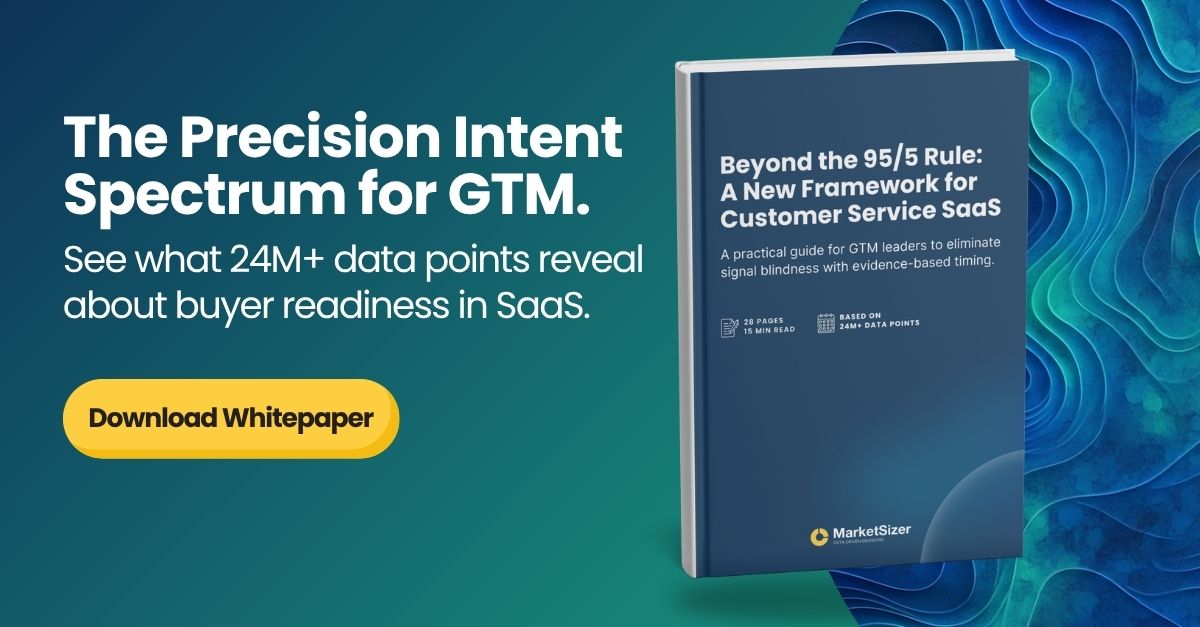
Sales and marketing teams are doing more than ever: More outbound. More campaigns. More engagement channels. But pipeline still feels unpredictable. Conversion rates stall. Renewals come in shaky. And when deals do close, it’s unclear why one landed and another slipped away.
What if the issue isn’t effort or targeting, but timing?
Many GTM teams are executing flawlessly. They’re just executing too late. This blog breaks down why timing, not volume, is now the differentiator in go-to-market execution. We’ll unpack how mistimed outreach undermines even the best strategy, how behavior-based triggers outperform generic touchpoints, and what you can do to improve GTM timing without needing new tools or headcount.
It’s tempting to equate motion with momentum. Sales gets measured by touches, opens, and meetings booked. Marketing by campaign reach and lead volume. RevOps by pipeline velocity dashboards. But those numbers are easy to inflate and easy to misread.
Here’s what static, volume-based GTM playbooks often produce:
These tactics feel productive because they generate activity. But activity doesn't guarantee timing. And without timing, activity often just burns cycles and budget.
We recently looked at go-to-market data across 110+ Customer Support and Live Chat SaaS vendors.
🕑 Renewal windows are shrinking.
Some vendors are now losing customers an average of 110 days earlier than they did just a year ago.
That’s nearly four months of pipeline and expansion potential erased, not because teams didn’t care or try, but because their outreach lagged behind buyer behavior.
In this market, being late is indistinguishable from being irrelevant.
👉 Want the data behind this? Download the Precision Intent whitepaper and see how GTM leaders are flipping their funnel from volume to evidence-based timing.

Sales teams have long chased speed-to-lead. But fast outreach isn’t useful if it lands after the signal has passed.
Here’s what’s actually working:
This shift away from static scoring and toward real-time timing awareness means your message lands when it matters most. You don't just respond to motion, you anticipate it. If you want a full breakdown, our guide on Timing Intelligence walks through how to design a timing-aware GTM engine step-by-step.
.png)
Think about the last time a deal felt... easy.
The buyer was responsive. They had budget. The timeline was tight, but clear. You probably thought, “If only all deals were like this.”
Here’s what likely happened:
You unknowingly landed your outreach inside a timing window; the narrow band where the buyer was actively evaluating change.
When GTM teams align their outreach, messaging, and campaigns to live behavioral windows, deals stop feeling “lucky.” They start feeling consistent.
You don’t need new software to start moving earlier. Here’s a practical timing checklist to assess where you are and where to adjust:
👉 Want to know which CRM fields actually help you act earlier? Explore the key CRM data points for GTM timing models used by leading B2B SaaS vendors to prioritise outreach, retention, and expansion with greater confidence.
If you answered "no" or "not yet" to more than two, you're likely missing high-impact timing moments.
Legacy intent data based on content views, ad clicks or generic lead scores has value but on its own, it’s not enough to indicate readiness. Buyers may consume your content weeks before they’re ready to talk.
Compare that to:
These are contextual, time-sensitive signals that directly correlate with readiness to engage, switch, or expand.
Static scores tell you who.
Timing signals tell you when.
Both matter, but only one helps you act early enough to matter.
When teams sense they’re missing timing, the instinct is to fix it with more touches.
You’ve probably heard:
These are volume solutions to a timing problem. They treat symptoms, not the root cause.
The better move is to redesign the flow to engage fewer people but at the right moment. That’s what drives reply rates up and makes GTM feel more like signal-matching than slot machine.
You don’t need to throw out your GTM playbooks. But they work best when they’re triggered by timing, not scheduled arbitrarily.
Try this:
The best GTM strategies don’t start with tools. They start with timely decisions.
Speed is how fast you act. Timing is whether that action lands when it matters. You can be fast and still be too late.
Absolutely. In Customer Support and Live Chat SaaS, churn risk appears long before it shows up in a dashboard.. MarketSizer detects churn risks (e.g., competitor trials) before they hit dashboards giving Customer Success teams time to act.
Look for red flags like low reply rates, late-stage renewals, or conversion drop-offs despite high activity. These are often symptoms of mistimed outreach.
Not necessarily. Start by improving internal visibility across teams. Make sure signals from CS, product usage, or website behavior aren’t siloed. MarketSizer integrates with what you already use (CRM, Apollo, LinkedIn) and delivers action-ready intelligence where it counts